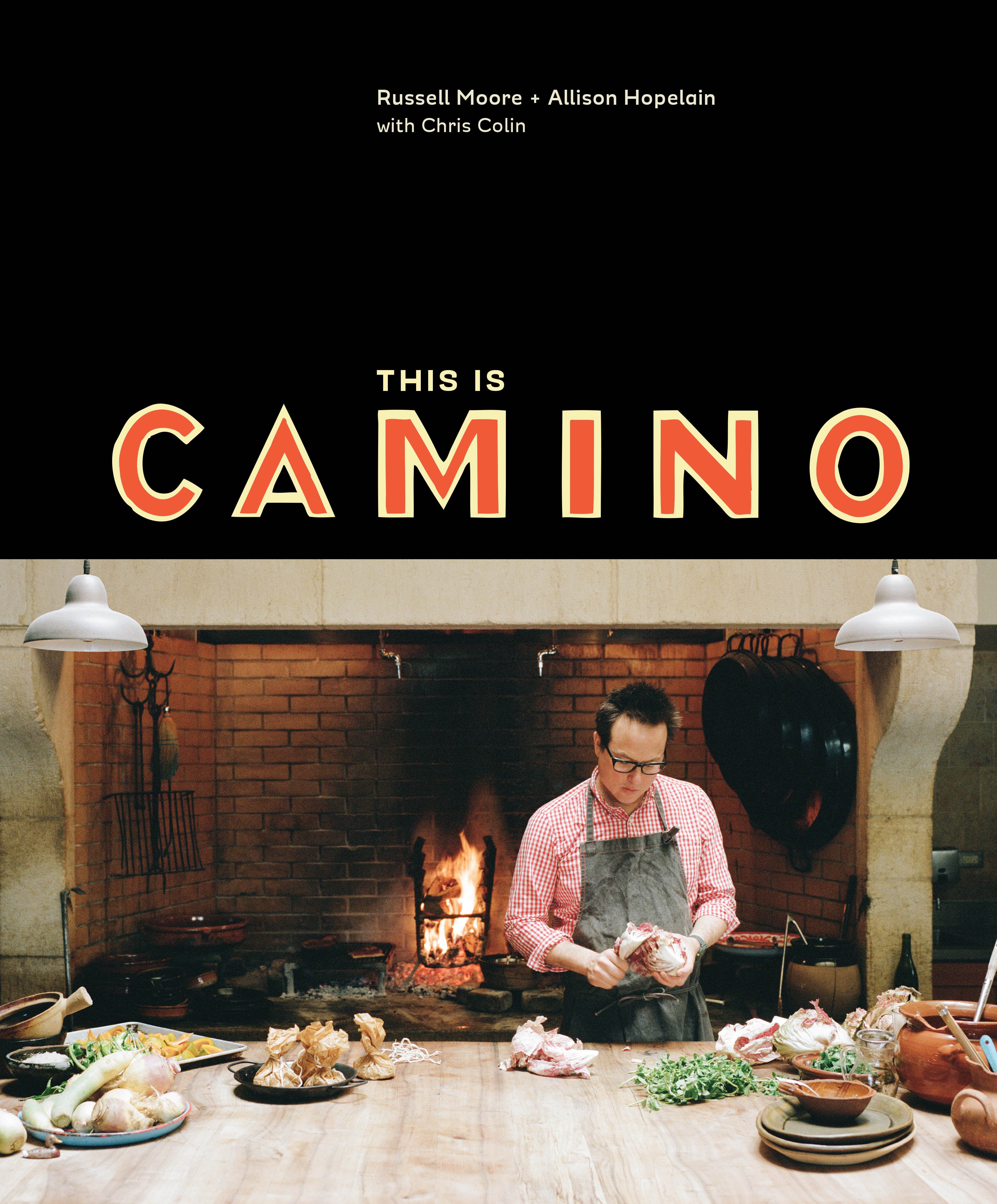







In This is Camino, Russell Moore and Allison Hopelain share the recipes for some of the warm, hospitable recipes that their Oakland restaurant is known for.
Since we only serve local fish and shellfish at Camino, oysters from Tomales Bay have a pretty regular spot on the menu since they are plentiful much of the year. We rarely serve them raw. Restaurants that serve raw oysters often have dedicated shuckers working in a station dedicated to raw seafood. If we were to serve raw oysters we would have to totally rearrange our cook line and hire another cook (hard enough to staff the place as it is!). Plus it makes sense for the fireplace restaurant to cook oysters using the fire.
At Camino, we bake these oysters in the wood oven, but you can just as easily bake them in a regular oven. We serve them with different side salads—red daikon, fennel, yacón—as a little accompaniment.
4-6 servings
- Preheat the oven to 500ºF (or as hot as your oven will go without burning your house down).
- Trim the fennel, reserving a handful of the fronds for the filling and saving the rest of the fronds and the stems to line the baking dish. Finely dice the trimmed fennel bulb, then sauté it in 1 tablespoon of the butter for about a minute. Add a splash of water and cook until tender, about 2 more minutes.
- Split the scallion lengthwise, then cut it into fine slices. Finely chop the mint and the handful of fennel fronds. Work them together with the scallion, cooked fennel, absinthe, breadcrumbs, a pinch of salt, and the remaining butter. If the butter is not well incorporated, you will end up with pools of melted butter in the oyster shells.
- Shucking oysters is more a matter of finesse, not strength so approach it gently and with a little caution. Fold a dishtowel and set it in the palm of your non-dominant had. Place the oyster, cup side down, on top of the dishtowel with the narrow, hinged end pointed toward you. Without using much force (because you are pointing the knife directly at your hand), finesse the tip of your oyster knife into the hinge. It helps if you wiggle both the knife and the oyster slightly to help the knife find its way in. Once the tip is in, give it a twist—the shell will release with a pop. Often, a little piece of the shell will break off—wipe your knife clean before going back in. Pry open the top shell and run the knife across the inside of the upper shell to cut the abductor muscle, located on the right side of the round end. Discard the top shell. Hold the oyster steady from this point on so you don’t spill the liquor—you want it to keep the oyster moist while you bake it. Run your knife across the inside of the bottom shell to cut the other side of the abductor muscle. If the oyster isn’t loose you may need to run your knife around the edge. Remove any bits of shell or detritus that fell in.
- Set the shells carefully in a baking dish lined with the rest of the fennel stems and fronds to hold them upright. Put about a tablespoon of the breadcrumb mixture on top of each oyster and bake until the breadcrumbs are brown, approximately 6 minutes.
Reprinted with permission from This Is Camino by Russell Moore and Allison Hopelain with Chris Colin, copyright © 2015. Published by Ten Speed Press, an imprint of Penguin Random House LLC.
